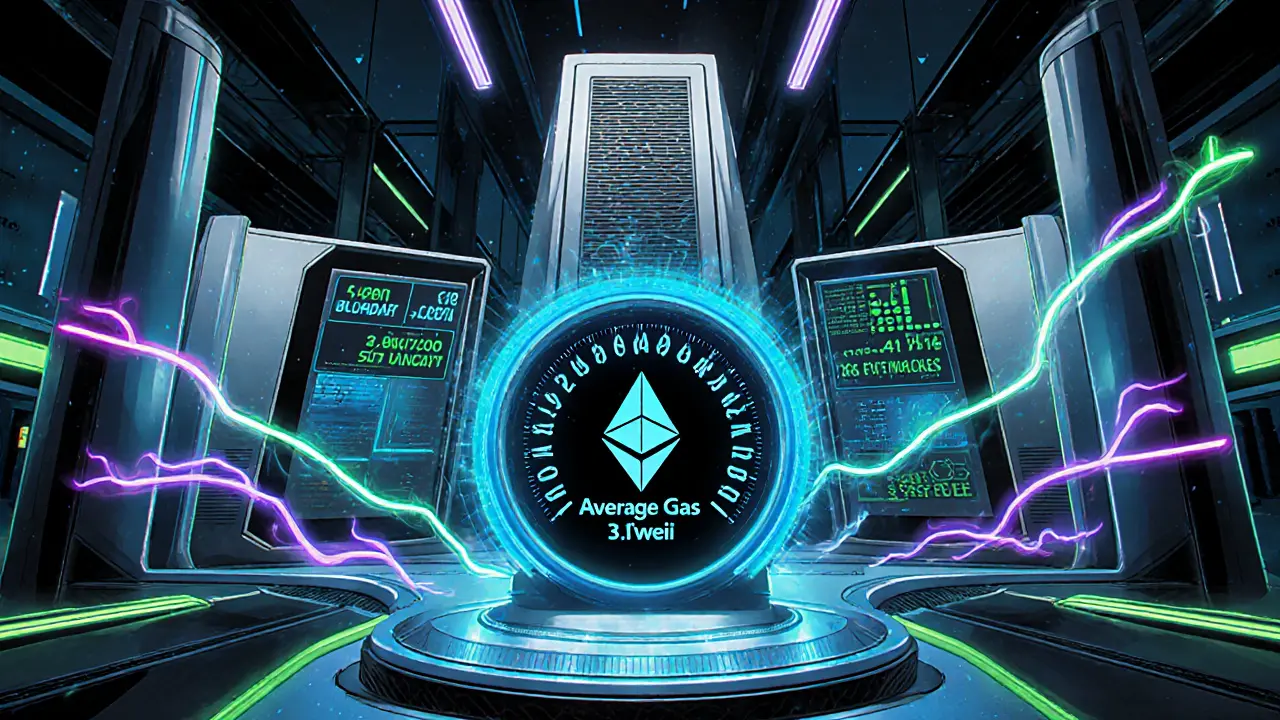Ethereum Gas Fees vs Other Platform Costs: 2025 Comparison
Explore how Ethereum gas fees dropped 95% in 2025, compare costs with Solana, Arbitrum, Optimism and Polygon, and learn practical tips to keep transaction fees low.
Continue ReadingWhen dealing with blockchain transaction costs, the amount of money users pay to move data or value across a distributed ledger. Also known as transaction fees, these costs vary widely depending on the underlying blockchain, the current load on the network, and the incentives built for miners or validators. A key component is gas fees, the unit price paid for each computational step in a transaction on platforms like Ethereum, which directly ties to how much processing power the network must allocate. Another related concept is miner fees, the reward miners receive for confirming and adding a transaction to a block. Finally, network congestion, the condition where many users compete for limited block space, driving fees up can push costs from a few cents to several dollars in minutes. Understanding these moving parts helps you predict spending, time trades, and choose the right chain for your needs.
Blockchain transaction costs encompass three main attributes: the fee model, block size limits, and incentive structures. The fee model determines how users set a price to have their transaction prioritized, which means higher bids lead to faster confirmation – a classic supply‑and‑demand relationship. Block size limits cap the number of transactions a single block can hold, so when demand spikes, users compete, and fees rise. Incentive structures align miner or validator earnings with network security, ensuring that higher fees compensate for the work required to keep the ledger honest. For example, Ethereum's gas‑price auction lets wallets choose a gas price; if the network is busy, the auction pushes the price up, illustrating the triple connection: blockchain transaction costs encompass gas fees, miner fees, and network congestion. Similarly, Bitcoin’s fee per byte model shows that larger transactions cost more, tying transaction size directly to cost. These relationships mean that anyone planning a large swap, NFT mint, or regular payments must watch fee‑forecast tools, compare average gas prices across hours, and consider layer‑2 solutions that batch transactions to lower per‑transaction expense.
With this background, the articles below will walk you through real‑world examples, deep dives into fee estimation tools, and strategies to minimize spend on popular chains. Whether you're a casual trader curious about why a simple transfer suddenly costs $15, or a developer building a DeFi app that needs predictable pricing, the collection gives you actionable insights, comparative tables, and step‑by‑step guides. Ready to see how each factor plays out across Bitcoin, Ethereum, and emerging blockchains? Dive into the posts to learn practical tricks, see current fee trends, and discover which networks offer the best cost‑to‑performance ratio for your use case.

Explore how Ethereum gas fees dropped 95% in 2025, compare costs with Solana, Arbitrum, Optimism and Polygon, and learn practical tips to keep transaction fees low.
Continue Reading